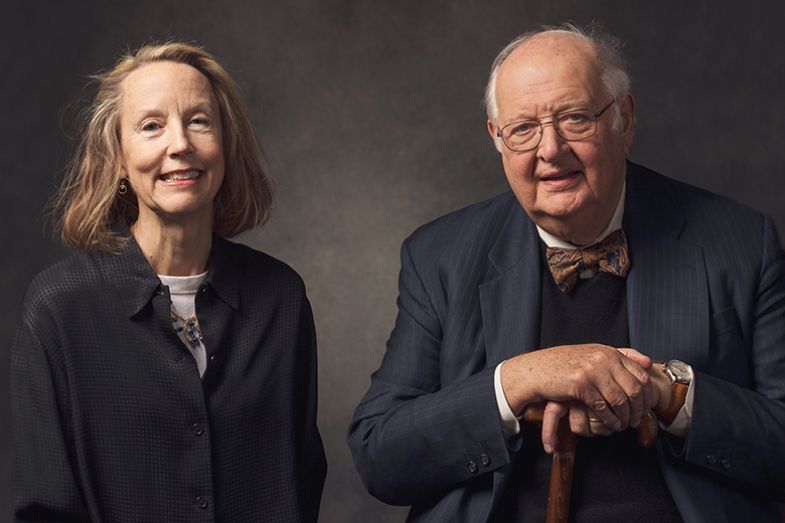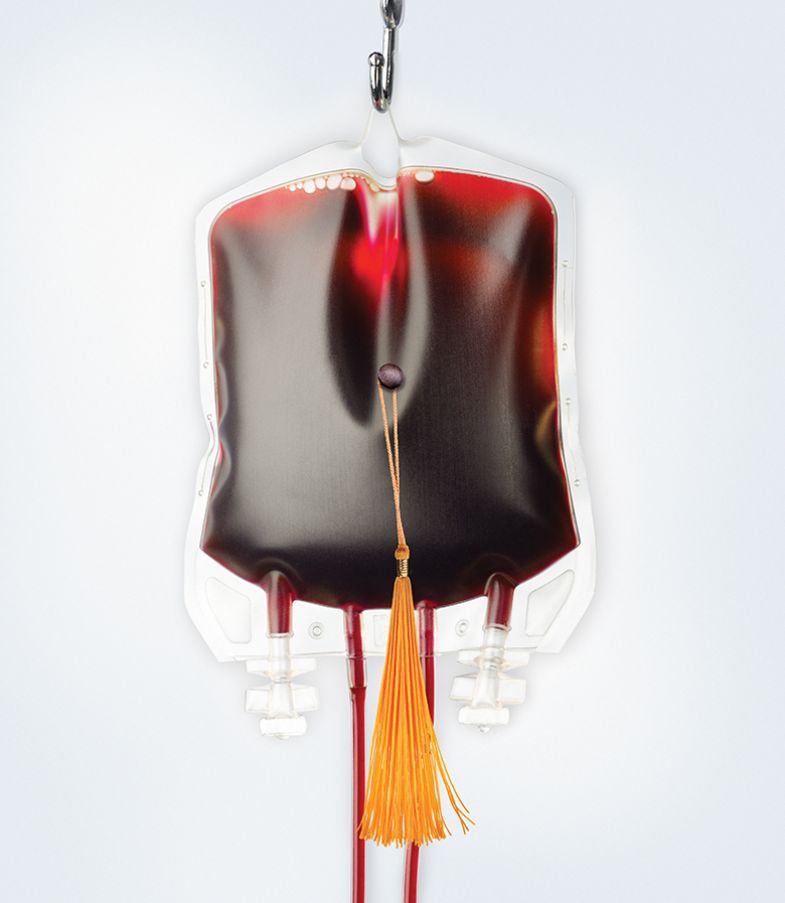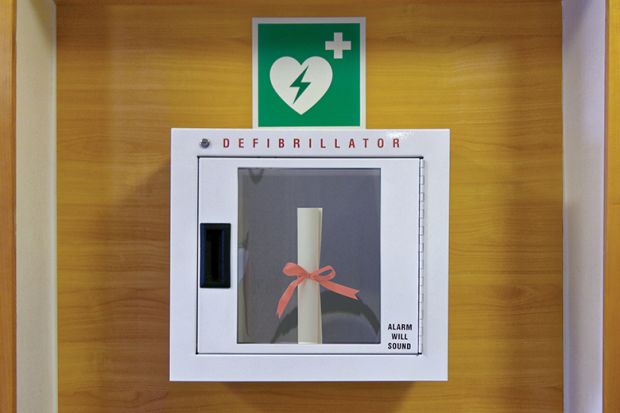When Anne Case and Sir Angus Deaton started looking at death rates in America over recent decades, what they found was “a total surprise” to them – “a big shock”, according to Case.
“We thought we’d really got something,” adds Deaton. And, sure enough, when the married Princeton University economists presented the findings at conferences, “people’s jaws would drop”, Deaton tells Times Higher Education.
They had previously been pursuing their own strands of research: Case looking at rising rates of reported pain in the US, Deaton at rising suicide rates. “We’re a grim household,” deadpans Case, a leading health economist.
They then started investigating deaths from all causes, finding that mortality rates among “US white non-Hispanics” aged 45 to 54 had risen since 1999. Yet falling mortality rates have been a key characteristic of advanced societies “since the Enlightenment” and “most notably over the last 100 years”, says Edinburgh-born Deaton, who won the Nobel Prize in Economic Sciences in 2015 for his analysis of consumption, poverty and welfare. So what they found about death rates for such a large subgroup in the US “was sort of astonishing and we thought we must have it wrong”, he continues.
Case and Deaton’s research resulted in 2015 and 2017 papers that pinpointed three factors behind these rising death rates and grouped them together in a way previous studies had not: suicide, alcoholic liver disease and drug overdoses (driven by the opioid crisis). Case coined the term “deaths of despair” for the whole group.
The research has drawn intense media attention: for example, New York Times columnist Ross Douthat recently invoked the “deaths of despair” concept in describing an “immediate crisis…killing tens of thousands of Americans right now – more than the crack epidemic at its worst, more than the Vietnam War”. In terms of policy impact, Congress’ Joint Economic Committee has investigated long-term trends in deaths of despair, finding that “Case and Deaton have drawn attention to an important public health phenomenon, but we have far to go before understanding its implications for public policy and the health of our economic, community, and family life.”
Their work has now led to a book, Deaths of Despair and the Future of Capitalism, which issues an urgent warning: “Something important, awful, and unexpected is happening.” It indicts American capitalism’s failure to address the transformative forces of globalisation and deindustrialisation; the continued “disgrace” of the US healthcare system; the “increasingly anti-worker behaviour of American corporations”; and their successful lobbying of government to support their interests.
But the book also spends much time analysing one of the key characteristics of the rise in death rates, ill health and pain: “It’s really a phenomenon that has happened to people without a college degree,” says Case. “The four-year college degree is increasingly dividing America,” she and Deaton write.
In an era when many developed nations have shed manufacturing jobs and transitioned to becoming “knowledge economies”, decent jobs open to those with only school qualifications are now scarce; being a graduate, preferably of a prestigious university, is increasingly a prerequisite for social status. The split between graduates and non-graduates is now often seen as a crucial political divide in many Western nations, with non-graduates decisive in the votes for Donald Trump and Brexit. What Case and Deaton’s book suggests is that dire consequences for the health and well-being of individuals – and of society – may result when the divide between graduates and non-graduates is made too sharp.
Case highlights one key trend here: the earnings “premium” for college graduates above non-graduates “increased really dramatically between 1980 and 2000”. In the book, she and Deaton analyse data on this from the US government Current Population Survey. They find that for white workers taken as a whole, median hourly earnings had an average annual growth rate of 0.4 per cent between 1979 and 2017. For “white men without a bachelor’s degree”, the annual average was –0.2 per cent.
“Those who graduated from high school in the early 1970s and who decided not to go to college could not have known how much they would be giving up by the end of the century,” they write.

There is a key graph in the book that the authors call the “things come apart” picture. This compares rising mortality rates for “US white non-Hispanics” from 1999 to 2017 with the continuing downward rates for the same groups in other developed nations. It reveals a total of 600,000 middle-aged Americans who “would be alive if progress [in declining mortality rates] had gone on as expected”, they write.
Case and Deaton explain their focus on whites by saying that while “black mortality rates remain above those for whites” overall, the recent, less studied, change is among whites.
For the past 30 years, US death certificates have recorded the highest level of education the individual attained. So while the data on deaths, held by the Centers for Disease Control and Prevention, do not include individuals’ incomes, they do include their educational background.
This theme of education has “not been pulled up by others [researching US health inequality] as perhaps it ought to have been”, says Deaton, emeritus professor of economics and international affairs at Princeton, and senior scholar in its Woodrow Wilson School. “We wanted some measure of who this [rising level of mortality] was happening to,” he adds. Furthermore, those education data are “relatively new” and “not many people had actually looked at [them]”.
Case and Deaton write that, for the cohort of “non-Hispanic whites” born in 1935, the difference in the risk of a “death of despair” between those with and without a bachelor’s degree is “three per 100,000”; for those born in 1960, it is “ten times larger”.
But is level of education just a proxy for people’s income here? Or is there something more fundamental at work about how having or not having a degree shapes people’s lives?
“That is the $64,000 question,” says Case, emeritus Alexander Stewart 1886 professor of economics and public affairs at Princeton, and director of its Research Program in Development Studies. “We have never actually said that education is causal: that it’s a magic bullet that somehow protects people. It’s a matter of active research the extent to which education protects people…or whether it’s just a marker for social status…or income.
“The jury is still out on that. But with our work what we’ve just tried to document is that, across both morbidity [rate of disease] and mortality, [level of education] certainly is a way to divide the data that is really powerful.”

Working at Princeton, Case and Deaton have been part of a socially exclusive institution. While the pair have been writing about despair in America, they “haven’t spent time in Dayton, Ohio” or similar places experiencing the most severe afflictions of deindustrialisation and the opioid crisis, Deaton acknowledges, although he and Case have “learned a lot” from journalists “who responded to our work by [going] out to exactly those places”. They highlight, as one example, a PBS NewsHour TV documentary on deaths of despair in Maysville, Kentucky.
Yet their research on this theme had its genesis in wanting to understand why the suicide rate in Madison County, Montana, where they spend their summers, is four times that of Mercer County, New Jersey, where they spend the rest of their year.
They found a “very different mindset” among people in Montana, says Deaton.
“It’s not clear that what Trump is doing is going to help them very much,” he continues. “But given the fact that the successful establishment has really done nothing for them, their hatred of people like Hillary Clinton is understandable to us in a way that it wouldn’t have been had we not been there.”
Case and Deaton’s own educational success stories began in New York state and Scotland respectively. Case was brought up in what she terms “the hard scrabble part” of the state, an area that would now be seen as “part of the Rust Belt”. She went to a “very good state university” – the State University of New York Albany – followed by a doctorate at Princeton and a career in economics that has focused on “questions about how people hold body and soul together”.
Deaton’s father left school without qualifications and went through “20 years of educational struggle” to become a civil engineer. The family “never had any money”, Deaton says, but his father was “very keen that I be better educated than he had managed to be”, which led to a scholarship to the private Fettes College in Edinburgh and then to the University of Cambridge. There, he was influenced by figures, including Amartya Sen, “who saw economics as a very broad church, including things like demography, philosophy”.
Case and Deaton became a couple when she returned to Princeton to teach after a spell at Harvard University. “Early on, when we were together, we tried to write some papers – and they were quite successful,” she says. “But we fought over every word. And we decided we would divide up the world. So Angus took India and I took Africa.”
The work on “deaths of despair” was so important to them that they joined forces again as research collaborators. However, despite their huge excitement about it, their initial paper, sent to medical journals because of its health focus, met with rejections – a tale to warm the heart of any academic whose most cherished research has been knocked back.
On first submission to a journal, Deaton says, the paper was rejected “so quickly I thought I had put the wrong email address. You get this ping right back…‘Your paper has been rejected’.” The paper was eventually published in Proceedings of the National Academy of Sciences, to a glowing reception. The editor of the first journal to reject the paper subsequently “took us for a very nice lunch”, adds Deaton.
But before that, another leading medical journal “took three days to reject it”, he continues. The editor, he says, told them: “You’re clearly intrigued by this finding. But you have no causal story for it. And without a causal story this journal has no interest whatsoever.”
“That’s the sort of thing you get in economics all the time,” Deaton goes on, “this sort of causal fetish…I’ve compared that to calling out the fire brigade and saying ‘Our house is on fire, send an engine.’ And they say, ‘Well, what caused the fire? We’re not sending an engine unless you know what caused the fire.’
“It’s just something that’s taken over social science and medicine. Obviously, we want to understand causality, but the idea [seems to be] that the facts by themselves aren’t important any more.”
Case claims that while the book has a lot of economics in it, “it also would probably be rejected at [what are] considered the top five economics journals”, adding that: “We take causality the way historians would take causality, which is a much longer sweep over what’s been happening.”
Deaton describes it as a “great privilege working with Anne” again, stressing that their joint project is “not done yet, because we don’t know what sort of reception the book is going to get. But this has been quite a ride. I feel particularly privileged, because academics in their seventies don’t usually get this sort of opportunity to do some of the best work of their careers at what is probably the end of it.”
The final section of Deaths of Despair looks at potential policy solutions, arguing: “If we are to stop deaths of despair, we must somehow stop or reverse the decline of wages for less educated Americans.” On education policy specifically, Case and Deaton pose the question: “Would the world be a better place if everyone had a bachelor’s degree?” But in the context of unknown future changes to the labour market, they admit, “there is obviously nothing in a bachelor’s degree that insulates the holder against being replaced by a machine, or outcompeted by cheaper labor in the rest of the world”.
They conclude that “the sharp bachelor’s degree cutoff in America is surely divisive and unproductive”, calling for more “alternatives” in a school system “largely designed to prepare people to go to college”.
Deaths of Despair sheds important light on how the loss of manufacturing jobs and the rise of graduates have been two sides of the same coin in a US that has deindustrialised at breakneck speed in some regions, while shifting at a similar pace to a tech-focused “knowledge economy” in others. The economic, social and political consequences have been momentous.
Case and Deaton’s book often invokes Michael Young’s The Rise of the Meritocracy (1958). Young coined the word “meritocracy” as a satirical term, describing an imagined future dystopia in which social segregation fostered by selective education creates a chasm between the highly educated – who believe they “deserve” their social position because of their educational achievements – and the rest.
Deaton says that while the educational divide in the UK is not as stark as that in the US, there is “a sense in both Britain and [the US] of educated, successful meritocrats reaping all the benefits of globalisation and automation”. He adds that, “as Young predicted, the meritocrats believe they did it all by themselves…and that people who are not successful are people who had their chance and somehow blew it. The people who are not successful are alternately angry at the thought that the system is completely rigged and they never really did have a chance and alternately blaming themselves too…That leads to an extremely poisonous atmosphere.”
What Case and Deaton’s book vividly demonstrates is that, in the context of a malfunctioning form of capitalism, the myth of educational “meritocracy” can seriously damage people’s health.
Anne Case and Angus Deaton’s Deaths of Despair and the Future of Capitalism has just been published by Princeton University Press.
Register to continue
Why register?
- Registration is free and only takes a moment
- Once registered, you can read 3 articles a month
- Sign up for our newsletter
Subscribe
Or subscribe for unlimited access to:
- Unlimited access to news, views, insights & reviews
- Digital editions
- Digital access to THE’s university and college rankings analysis
Already registered or a current subscriber? Login








